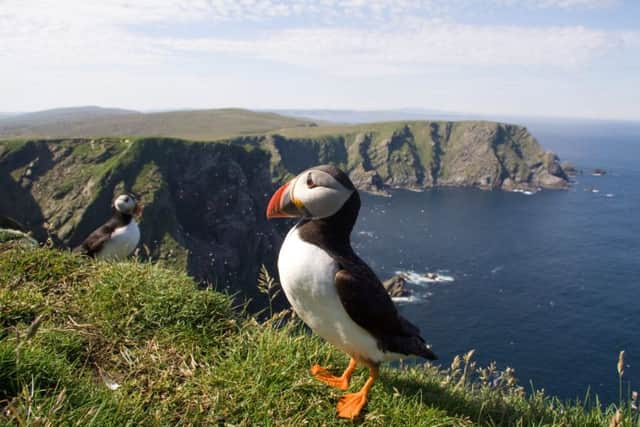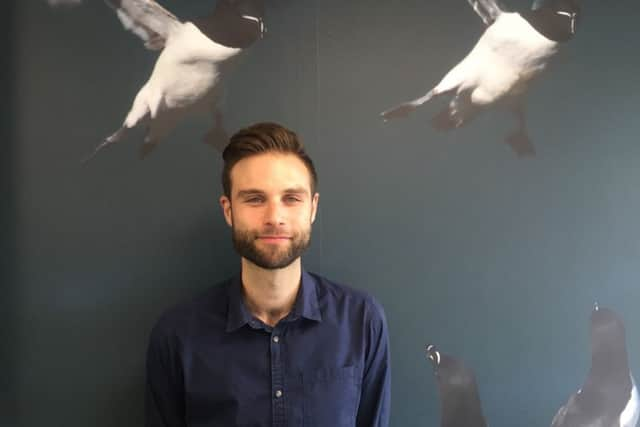David Hunt: Islands of unique opportunity for a strategy on natural environment
Forged by a turbulent geological past and sculpted by the oceanic climate and human activity over millennia, these islands are world-renowned for their landscapes, abundant wildlife and unique cultural heritage.
Even their names – from Bird Island (Foula) to Porpoise Island (Canna) underscore the intimate connections between people and nature. The natural environment is woven into the fabric of everyday island life, influencing transport, trade, agriculture, tourism and the arts.
Advertisement
Hide AdAdvertisement
Hide AdThe islands comprise 13 per cent of Scotland’s total land area, but they are home to some 40 per cent of our globally important wildlife sites. The disproportionate importance of Scottish islands for wildlife, compared to the mainland, cannot be underestimated.


Red-necked phalarope, great skua, great yellow bumblebee and others, species increasingly absent from the mainland, thrive. Habitats too: Hebridean machair is like nothing else on Earth and, characteristically, is in places where people and wildlife have lived alongside each other for generations.
Yet all is not well. The twin global climate and biodiversity crises have not ignored the islands. The millions of seabirds, for which the islands are famed, are disappearing at a truly alarming rate. Species such as Puffin and Kittiwake have been globally listed as vulnerable to extinction by the IUCN. In the near future, the species most vulnerable to climate change may only persist in areas of the best habitat and for many, our islands represent final outposts.
Islands are particularly vulnerable to the impacts of invasive non-native species, introduced either deliberately or accidently by humans. Rats and stoats, for example, although common on the mainland, arrive as novel predators on island systems. Ground-nesting seabird and wader populations cannot cope with higher levels of breeding failure as eggs and chicks are lost to predation.
The flower-rich arable grasslands of the Atlantic seaboard are created and sustained by low intensity High Nature Value farming and crofting. The financial viability of these ways of life is increasingly tested, amidst an uncertain future for agricultural support, and risk of potentially damaging impacts to communities and wildlife alike.


Last year’s historic Islands (Scotland) Act 2018 is therefore extremely timely. The Act presents tremendous opportunities for islanders and island wildlife.
RSPB Scotland has a longstanding presence on 29 islands, as part of those island communities. Our island work seeks to highlight the benefits of a collaborative approach to conservation, and we are greatly encouraged by an Act that acknowledges the particular challenges that island living presents.
At the heart of the Islands Act will be the formation of a National Islands Plan, presenting the Government’s strategy for how a suite of island outcomes will be delivered to improve and enhance key elements of island life including, crucially, environmental wellbeing – the natural heritage, biodiversity and ecological health of the islands. Moreover, an Island Communities Impact Assessment will look to ‘island proof’ existing, current and future Government policies, ensuring that island communities are not disadvantaged by geography.
Advertisement
Hide AdAdvertisement
Hide AdThe Plan provides the Scottish Government with a unique opportunity to implement a strategy that not only conveys the incredible importance of Scotland’s island natural heritage but one that has the importance of a healthy functioning natural environment ‘front and centre.’
Resilient and thriving species and habitats are not just important for Scotland’s international commitments to biodiversity and climate, but to island economies, cultural heritage and ultimately the health and wellbeing of us all. The islands bring visitors from all around the globe to witness their wildlife spectacles, now a cornerstone of our economies. A future with less wildlife is surely unthinkable.
The Plan must see Scotland develop an ambitious island biosecurity strategy, working alongside communities, infrastructure providers and businesses to ensure a future with no new arrivals and establishments of damaging non-native species. Given the intimate links between climate and invasive species issues, this should be seen as a ground-breaking approach to climate change adaptation for our wildlife.
The effective support of High Nature Value Farming and crofting should be a core aspiration of the Plan. Promoting the benefits to the protection of cultural heritage, working for wildlife and climate and contributing to sustainable island economics should be a key target.
The islands are amongst the most precious of Scotland’s natural assets. The National Islands Plan comes at a time of great significance for both their communities and their famed wildlife.
Have your say on the islands’ future here until 6 July:
https://consult.gov.scot/agriculture-and-rural-communities/national-islands-plan/
David Hunt, Seabird Recovery Officer, RSPB Scotland